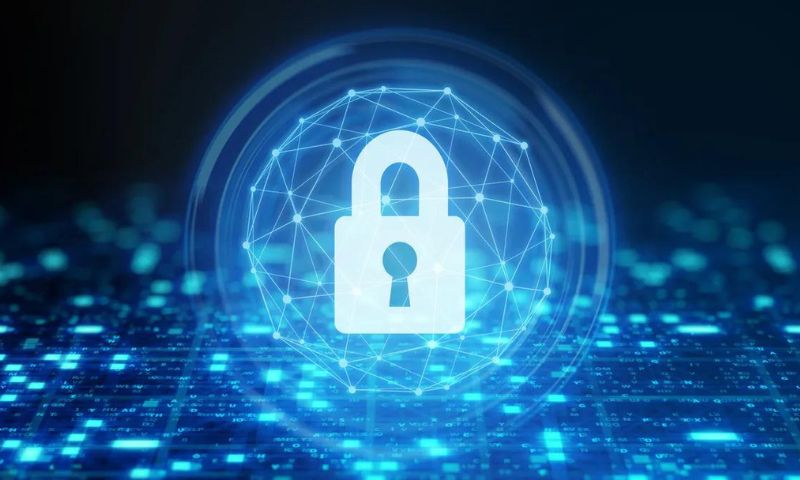In a world buzzing with digital threats, the security of blockchain technology stands out. You often hear it’s bulletproof—a fortress for your data. But ask yourself, is it really? I’m here to peel back the layers and expose the truth, piece by piece. Together, we’ll dive deep into the vulnerabilities that lurk in the shadows of this so-called digital stronghold. We’ll tackle 51% attacks and uncover what it really takes to bring down decentralized networks.
Then, we’ll lock down the basics of blockchain security, hashing out encryption and consensus protocols that aim to keep your information tight. Next, I’ll guide you through securing blockchain architecture and transactions. Ever heard of smart contract risks? You will. And before we’re done, we’ll gear up for the future, sizing up the threats that quantum computing and cross-chain attacks pose. Ready to find out if your blockchain is more like a vault or a veneer? Let’s get started.
Understanding the Landscape of Blockchain Vulnerabilities and Threats
The Mechanics of 51% Attacks and Hash Rate Security
What is a 51% attack in blockchain? It’s when someone controls most of the network’s mining power. This person can then tamper with the recording of new blocks. They can stop other users from completing transactions. They can also reverse transactions they made. This causes issues like double spending.
How is hash rate related? It’s a measure of power miners have. More hash rate means more control. If one miner gets over 50%, this is a risk. But it’s not easy or cheap to reach. Only big networks like Bitcoin have seen attempts. Most don’t succeed. It’s easier to attack smaller coins with less mining power.
To keep this risk low, we spread out the mining power. More miners mean no one person holds too much power. This keeps our blocks secure.
Decentralized Networks: Identifying and Mitigating Emerging Threats
Next, let’s talk about decentralized network threats. These threats can attack the network’s trust. One issue is Sybil attacks. What’s a Sybil attack? Bad players create fake identities. They use these to gain a wrong influence over the network.
To fight this, networks check user actions. They make sure real users are taking part. This involves tests or entry costs. This way, it costs too much for fake users to join.
Another emerging threat is smart contract risks. What’s a smart contract risk? It’s when there’s a flaw in the contract code. Bad players can find and use these flaws.
To avoid this, we audit and verify contract codes before use. We double-check for any weak spots. Then, we can fix them before they cause any harm.
In all, blockchain does face security risks. Yet, we take many steps to keep networks safe and reliable. We check and protect every part of the process. This helps us trust the technology. It’s a constant battle. But it’s one we are set to face.
The Building Blocks of Blockchain Security
Cryptographic Security Measures and Encryption Standards
Let’s dive into the core of blockchain safety. At its heart lies a thing called ‘cryptographic security measures.’ Simply put, they are codes that keep data safe. Imagine them as complex locks that no ordinary key can open. Every bit of info on the blockchain has this lock.
Now, why does this matter? It’s because these codes stop hackers. They can’t mess with our data or steal our money. Encryption standards are the rules for making these codes strong. They make sure every blockchain uses top-notch locks.
From Proof of Work to Proof of Stake: Assessing Consensus Protocol Security
Ever wonder how blockchains agree on stuff? That’s where ‘consensus protocols’ come in. They are like the teachers of the blockchain. They make sure every computer, or ‘node,’ plays by the rules. ‘Proof of Work’ and ‘Proof of Stake’ are two big ways they do this.
Proof of Work makes computers work hard to prove they’re honest. This hard work helps to keep the whole network safe. But it eats up a lot of power. Proof of Stake, though, uses less power. It makes the system safe by asking for a kind of security deposit. If a node does something bad, it loses its deposit.
Both these ways have their own guards and locks. They each fight off different types of attacks. For example, in Proof of Work, it’s tough to attack because you’d need so much power, more than everyone else combined. That’s super expensive and hard to pull off. But in Proof of Stake, if you have a lot of the blockchain’s coin, you get a big say. So, it’s more about how much you hold.
To round up, blockchain is like a team sport. Cryptographic security measures are the players’ skills. Encryption standards are the playbooks. Consensus protocols are the rules of the game. Together, they work to keep the game fair and secure. Next up, we’ll peel back the layers on how to keep every part of the blockchain, from the ledgers to the transactions, in tip-top shape.
Safeguarding Blockchain Architecture and Transactions
Ensuring Distributed Ledger Reliability through Auditing and Node Protection
Let’s talk about keeping blockchain safe and sound. Why is blockchain auditing important? It catches any funny business in the blockchain. You see, just like you check your candy haul after trick-or-treating, blockchain experts check the records for anything out of place. This is “auditing,” where we dig through the blockchain to make sure everything’s on the up and up. It helps us trust the system, kind of like when your best friend says they have your back.
Protecting each blockchain “node,” or computer linked to the blockchain, is also crucial. Think of a node like your own secret base: if it’s easy to get into, that’s bad news for you. Just like how you wouldn’t hand out keys to your treehouse, we shouldn’t let any old Joe mess with these nodes. They’re what keep the blockchain cookin’ right. We shield them from hackers, making sure everything runs without a hitch.
Smart Contract Risks and Strategies for Transaction Verification
Here’s the scoop on smart contracts. What risks come with smart contracts? They might have sneaky bugs that let someone swipe your coins. Smart contracts are like super-smart vending machines on the blockchain. You put in your digital money, and they automatically give you what you asked for, like a new game or some digital sneakers. But sometimes, they can go a little bonkers. If they’re not set up perfectly, someone might nab your cash without you getting your stuff.
To stop that, we have to check every deal made by these smart machines. This is “transaction verification.” It’s like when you trade cards with a friend, and you both show exactly what you have before swapping. We make sure everyone gets what they claimed they would, fair and square.
The world of blockchain is a wild playground, folks, where data is treasure and security is king. We’re part of the squad that keeps your digital playground safe, so you can have fun without worry. Remember, a well-protected blockchain makes sure your data stays yours – truly safe, secure, and ready for the future.
Future-Proofing Blockchain against Advanced Threats
Quantum Computing: The Impending Challenge for Blockchain Security
You might wonder, “What is quantum computing?” Simply put, it’s a powerful computer. It can solve complex math fast, way faster than today’s computers. This is both amazing and scary, especially for blockchain security.
Quantum computers can break codes that keep our blockchain data safe. That’s bad news. But here’s the good news: we’re working on new ways to keep our blockchain safe from these supercomputers. We’re designing stronger security that even quantum computing can’t crack. Like changing a wooden door to a steel vault, making it tough for anyone to get in.
Now, imagine keys that change constantly. That’s what we’re doing with quantum-resistant encryption. These are locks that keep changing, making it almost impossible for quantum computers to pick the lock.
Cross-Chain Attack Prevention and Robust Multi-signature Protocols
Let’s shift gears and talk about cross-chain attacks. These are tricks by hackers to steal from blockchains. They’re like bandits robbing trains between towns. The blockchain world is like lots of towns, each with its own safe. Cross-chain attacks try to rob safes when money moves between towns.
To stop these bandits, we build stronger links between blockchains. Think of it as having better security on trains. We check everyone’s tickets and keep an eye on the cargo. We make sure that if you send something, it gets to the right place safe and sound.
Another cool thing we use is called multi-signature protocols. They are like having a club with a secret handshake. To actually do something, you need not just one, but a few secret handshakes. This means a hacker has to trick not one, but many people, and that’s really hard to do.
All this stuff—quantum-resistant locks, better train security, secret club handshakes—are ways we make sure your blockchain data stays safe. It’s like a big, tough game of keep-away, and we’re getting really good at it.
We’ve dived deep into blockchain’s security world today. We talked about how 51% attacks shake the system and how networks must watch for new dangers. Remember, encryption and the right proof models keep the blockchain safe. We also saw the need for checking ledgers and protecting nodes to stop bad deals.
But, the future brings new tests, like quantum computing. To stay ahead, we must build strong defenses like multi-signature methods. If we’re smart and stay alert, we can keep blockchain safe for everyone. Keep these tips in mind as the tech grows. Security isn’t just a bonus; it’s the backbone of trust in blockchain. Let’s ensure we’re all playing our part to shield it.
Q&A :
How does blockchain technology enhance security?
Blockchain technology is renowned for its enhanced security compared to traditional record-keeping systems. By distributing a ledger across a network of computers, blockchain makes it almost impossible for hackers to corrupt. Each block in the chain is encrypted and linked to the previous one. This, along with the consensus required to validate transactions, ensures a highly secure and tamper-evident system.
What makes blockchain technology resistant to fraud?
The inherent design of blockchain technology integrates various mechanisms that make it resistant to fraud. Each transaction is recorded across multiple copies of the ledger that are spread over many nodes (computers), which must all agree on the ledger’s current state. Furthermore, once a block is added to the blockchain, it is extremely difficult to alter since changing any single block would require altering all subsequent blocks as well.
Can blockchain technology be hacked or compromised?
While blockchain technology is considered highly secure, it is not completely immune to attacks. However, the complexity and cost of pulling off a successful hack are exorbitant, making it an unattractive target for would-be attackers. Exploits like 51% attacks, where an attacker gains control of the majority of the network’s mining power, are theoretically possible but are economically impractical on larger and more secure blockchains.
What security practices should be used with blockchain technology?
Best security practices for blockchain technology involve ensuring the security of the endpoints that interact with the blockchain network. These practices include keeping software up-to-date, using hardware wallets for cryptocurrency, implementing multi-signature protocols, and practicing robust cryptography. Awareness and mitigation of smart contract vulnerabilities and selecting a blockchain platform with a strong security track record are also crucial.
Is blockchain technology secure for all types of data?
Blockchain technology is secure for many types of data, particularly for transactional data in the form of digital assets and smart contracts. However, personally identifiable information (PII) and other sensitive data require careful handling when incorporated into a blockchain. Privacy-focused blockchains or additional layers like zero-knowledge proofs are sometimes necessary to maintain the confidentiality of certain types of data while utilizing the security benefits of blockchain technology.




